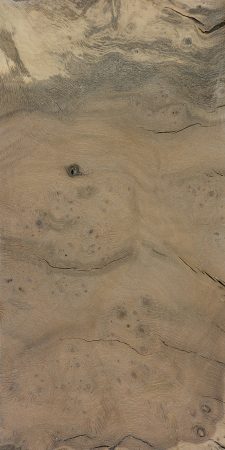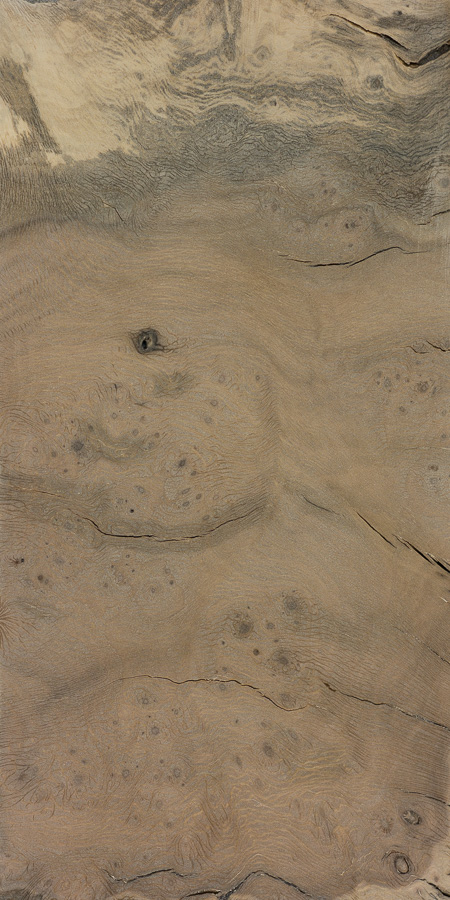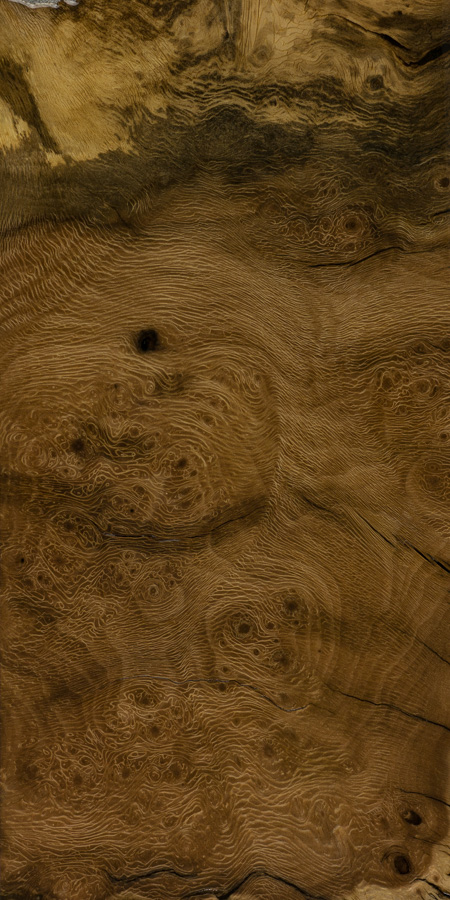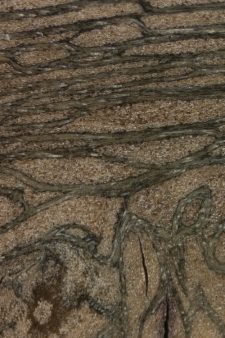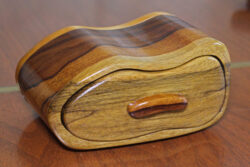Common Name(s): Chamise, greasewood
Scientific Name: Adenostoma fasciculatum
Distribution: Oregon, Nevada, California, and northern Baja California
Average Dried Weight: 58.4 lbs/ft3 (935 kg/m3)
Janka Hardness: 2,420 lbf (10,740 N)*
*Estimated hardness based on specific gravity
Comments: The average dried weight listed above was extrapolated from data from the Global Wood Density Database. The written descriptions below were provided courtesy of Eric Krum.
Color/Appearance: Heartwood color is grayish brown with darker burl eyes throughout. Sapwood is yellow and because of the irregular shape of the root is mixed in with the heartwood when cut.
Grain/Texture: Grain is more or less swirled and irregular with a fine texture and varying frequency and size of knot clusters.
Endgrain: Diffuse-porous; small pores in no specific arrangement; growth rings indistinct; rays not visible without lens.
Rot Resistance: No data available.
Workability: Like most roots areas of bark and embedded dirt are common to roots should be approached with care to avoid tearout. As the root dries stress cracks open in the wood. Sands well and the dense grain is able to take a natural polish. Turns well but embedded dirt containing silica will dull tools.
Odor: No characteristic odor.
Allergies/Toxicity: Besides the standard health risks associated with any type of wood dust, no further health reactions have been associated with Chamise. See the articles Wood Allergies and Toxicity and Wood Dust Safety for more information.
Pricing/Availability: Most commonly sold as root burls, expect prices to be moderate.
Sustainability: Chamise is not listed in the CITES Appendices or on the IUCN Red List of Threatened Species.
Common Uses: Small specialty wood items.
Comments: The oily leaves give rise to the common name greasewood. Chamise is an evergreen shrub in the Rose family “Rosaceae”. Root systems of Chamise are strong and extensive, frequently exceeding 10 feet. The large base burl that provides the only useable wood also allows Chamise to grow again after a fire destroys the growth above the ground as the oily leaves burn hot.
Images: Drag the slider up/down to toggle between raw and finished wood. A special thanks to Eric Krum for providing the wood sample of this wood species.
Identification: See the article on Hardwood Anatomy for definitions of endgrain features. Please note that the sample picture is burl wood, and the endgrain images may not be an accurate reflection of the anatomy of normal wood from this species.
The Adenostoma genus has just two species, (the species on this page, and Adenostoma sparsifolium). Both are generally no bigger than shrubs, and neither are used in woodworking applications. The sample shown above is a root burl taken from what is otherwise a small, multi-stemmed shrub.
Related Content:

